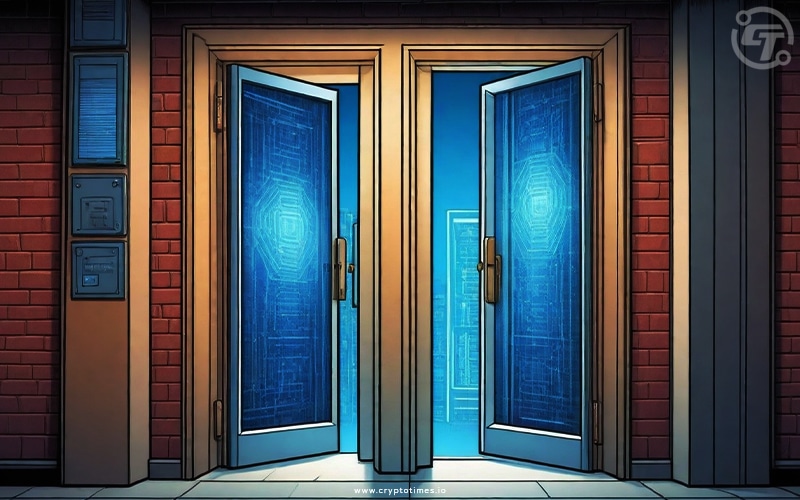Traditionally, the tedious onboarding process of smart contract chains and their dApps and the complex operations surrounding the decentralized finance (DeFi) industry have shielded the Web3 ecosystem from millions of potential cryptocurrency users. .
The process of installing a wallet app, learning its intricacies, acquiring ETH, and finally purchasing Ethereum gas is a process that many potential people are waiting at the gate, unsure if they want the experience. It becomes too complex and cumbersome for most users.
Despite these major usability hurdles, the Web3 ecosystem has managed to stay afloat due to expectations of strong financial rewards. If you think you can make thousands or even millions of dollars playing with DeFi and the latest meme coins, setting up a new wallet seems like the least you can do. But without speculative incentives, the crypto user experience could be turning away hundreds of thousands of potential users.
Thankfully, new blockchain networks are able to overcome the traditional limitations of when Ethereum was designed, allowing a near-Web2-like experience for beginners. While many companies in this space continue to focus on speculation, these blockchain networks are carving their own path and are good products that could potentially emerge as winners over time. there is.
Let's check out some of these potential dark horses.
Vara Network Payless and Signless Transactions
Vara Network is a new smart contract platform using the latest technology in smart contract architecture based on WebAssembly. Several important innovations have been implemented in the way smart contracts are created and processed, allowing them to process parallel transactions much more efficiently than some traditional blockchain networks.
It also has a unique feature that allows users to completely forget about gas and the concept of signing transactions. His DApp developers at Vara can choose to fully subsidize the (very low) gas costs incurred by users by creating gas coupons.
As the name suggests, vouchers can be used to cover an individual user's gas costs and primarily serve to avoid the hassle of acquiring gas tokens. This saves users from tedious tasks during account setup or if they accidentally send all their gas tokens somewhere else, as is often the case with Ethereum.
This approach is particularly scalable for high-throughput, customizable chains such as Vara, since the costs themselves are likely to be small. The hassle of “filling the tank” is much more serious than the cost itself.
Finally, the “signless” aspect of transactions is a Vara-exclusive innovation that helps speed up the use of Vara dApps. Users can create temporary accounts that only need to be set up once. Each interaction then takes effect immediately without any additional confirmation. This is especially useful in fast-paced environments such as gaming and advanced trading platforms for binary options and perpetual trading.
“Near”, another new generation network using WebAssembly, will enable meta transactions in 2023, playing a role similar to Vara’s payless transactions.
Unlike vouchers, meta-transactions require extensive infrastructure setup as all transactions must be sent to and transmitted by intermediaries. This increases operational overhead and is typically difficult to implement in dApps. However, for users, the experience is very easy.
As well as signless transactions, Near features a FastAuth system that allows users to sign into the network using email or other forms of Web2 ID, reducing reliance on wallet apps. The network also allows for several cross-chain abstractions that facilitate onboarding from external chains to the network. This is a feature aimed at existing cryptocurrency users.
Ethereum Account Abstraction and Adoption Potential
Finally, Ethereum itself is also making strides toward improving the user experience through ERC-4337, commonly known as the Account Abstraction Proposal. This proposal includes many possible use cases, but is primarily focused on security. Smart contracts that can include features such as Web2 sign-in and differential permissions standardize the concept of his wallet and allow users to better manage their assets.
However, established blockchain networks must address significant adoption hurdles. The spirit of the ERC-4337 proposal is that nothing needs to change at the protocol layer, but instead adopts smart contract standards that enable these new features. Historically, such approaches have failed to produce results on Ethereum. For example, the ERC-20 standard is the oldest and least sophisticated standard, but over time it has been improved by many other standards such as ERC-777 and ERC-1155. Due to that inertia, the majority of today's tokens are still based on outdated designs, and some attempts to popularize better technology have largely failed.
Compared to Ethereum ERC, new blockchain networks like Vara can benefit from a clean slate, making it easier to adopt better UX practices from the get-go.
Therefore, in the coming days, we can expect to see even more participants in the Web3 ecosystem, thanks to emerging technologies and platforms that put consumer experience at the forefront.
Also read: BNB Chain launches roll-up-as-solution for layer 2 networks


